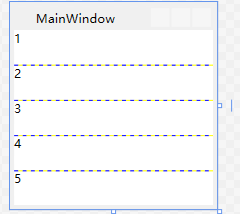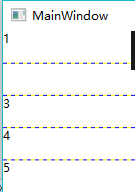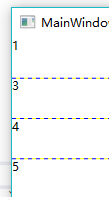假设我们有以下布局
展示出来的界面是这样子的
我们尝试把2这一列删除~
删除是删除了,但第二列还是占了位置啊!
于是我们尝试以下操作
这样的操作仅仅是删除了最后一行,5这个Textbox只能向上靠拢。
因此我们在删除之后,需要重新指定一下新位置
这样就正常了,但 Grid.RowDefinitions.Remove()这里怎么也得指定一下位置吧?
本文作者:樱花落舞
本文链接:https://www.cnblogs.com/yinghualuowu/p/9789491.html
关于博主:这里是个萌新
版权声明:本博客所有文章除特别声明外,均采用 BY-NC-SA 许可协议。转载请注明出处!
本文链接:https://www.cnblogs.com/yinghualuowu/p/9789491.html
关于博主:这里是个萌新
版权声明:本博客所有文章除特别声明外,均采用 BY-NC-SA 许可协议。转载请注明出处!



